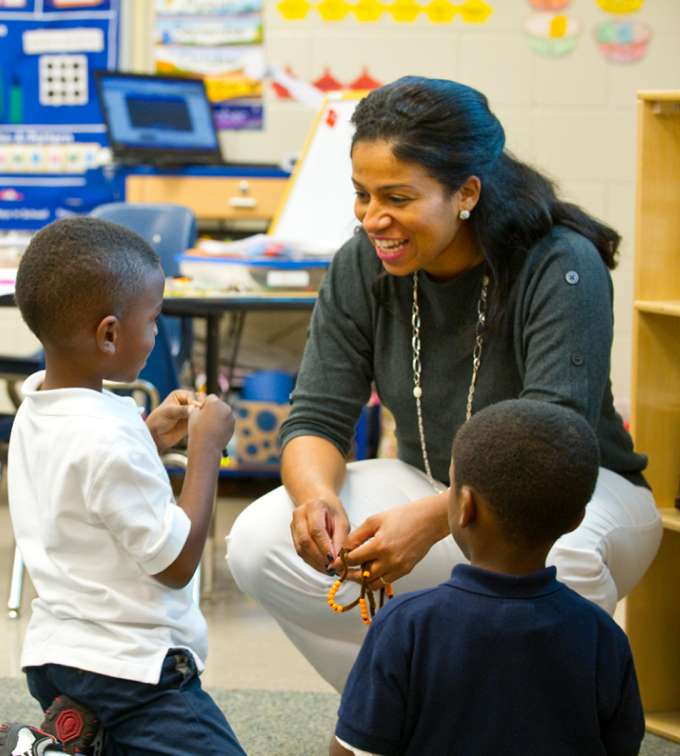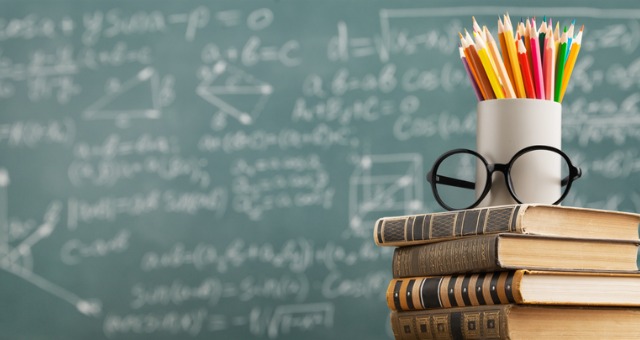A Comprehensive Overview to the Numerous Knowing Methods in Main Science Instruction
The exploration of diverse learning approaches in key science guideline provides a chance for teachers to boost pupil involvement and comprehension dramatically. By analyzing hands-on understanding techniques, inquiry-based methods, and joint strategies, we can determine efficient techniques that deal with numerous learning designs. Furthermore, the assimilation of technology and differentiated instruction plays an important duty in promoting a comprehensive setting. The question continues to be: how can these methods be effectively implemented in the classroom to optimize their impact? The solution hinges on a more detailed examination of each method and its ramifications for training scientific research.

Hands-On Understanding Methods
Hands-on learning methods play a crucial function in key scientific research instruction, engaging students in active exploration and trial and error. These approaches allow learners to connect straight with sensations and materials, fostering a much deeper understanding of clinical concepts. By utilizing manipulatives, models, and real-life experiments, educators create an atmosphere where trainees can observe, hypothesize, and check their concepts.
Such strategies not just enhance understanding yet also grow essential thinking and problem-solving abilities. When pupils join tasks like developing straightforward devices, planting seeds, or carrying out chain reactions, they are motivated to ask questions and look for solutions with their own monitorings. This experiential approach assists to debunk complex scientific concepts, making them much more relatable and available.
Furthermore, hands-on knowing advertises collaboration amongst peers, as students usually operate in groups to carry out experiments or share findings. This teamwork not only enhances their learning experience but additionally develops necessary social abilities. Eventually, integrating hands-on methods in main scientific research instruction fosters a long-lasting love of learning and interest concerning the all-natural world, laying a strong structure for future scholastic pursuits in scientific research and past.
Inquiry-Based Knowing
Inquiry-based knowing is a training technique that urges pupils to ask inquiries, investigate phenomena, and construct their very own understanding of clinical principles. This technique changes the focus from typical teacher-led direction to a much more student-centered experience, where learners take the effort in their academic journey. By fostering inquisitiveness, inquiry-based learning advertises much deeper engagement with the material, permitting trainees to discover subjects in a significant context.
In technique, this technique commonly includes hands-on experiments, monitorings, and important reasoning activities that line up very closely with the scientific method. Students are urged to formulate hypotheses, design investigations, and assess information, which grows vital abilities such as analytical and analytical thinking. The role of the teacher in this structure is to promote exploration, assisting trainees through the inquiry procedure while encouraging independent thought and cooperation.
Furthermore, inquiry-based learning nurtures a sense of possession over the understanding procedure, encouraging pupils to go after expertise actively. This approach not just improves understanding of scientific principles however also fosters a lifelong love for learning, outfitting pupils with the abilities needed to browse a progressively complex globe.
Collaborative Knowing Approaches
Collaborative learning methods encourage students to take part in meaningful interactions with peers, fostering a common obligation for their educational results. In primary science direction, these strategies urge students to collaborate to explore clinical principles, resolve troubles, and conduct experiments (primary science tuition Singapore). By participating in team activities, pupils can leverage varied point of views, allowing for richer understanding and retention of scientific understanding
One secret element of collaborative discovering is the focus on communication skills. Pupils must express their ideas, pay attention actively to others, and work out ideas, every one of which are critical competencies in both scholastic and real-world contexts. This social interaction not only improves their understanding of scientific concepts yet additionally advertises teamwork and dispute resolution skills.
In addition, collective discovering usually leads to increased motivation and involvement. They are extra likely to take ownership of their knowing trip when trainees see the worth of their payments within a group. Educators can promote this procedure by developing organized team tasks that line up with educational program goals while giving advice on efficient partnership techniques. Overall, incorporating joint learning techniques in main science direction cultivates a dynamic discovering environment that prepares pupils for future scholastic and social challenges.
Technology Combination in Science
The integration of innovation in primary scientific research direction boosts discovering experiences by supplying innovative tools and resources that support different teaching techniques, consisting of joint discovering - primary science tuition Singapore. Making use of digital platforms, simulations, and interactive applications permits students to engage deeply with clinical principles, assisting in a more hands-on approach to knowing
Online labs, for instance, enable students to carry out experiments securely and successfully, promoting inquiry-based learning. These devices can imitate real-world scientific circumstances, enabling trainees to imagine intricate procedures that would be tough to reproduce in a traditional classroom setup. Furthermore, innovation fosters communication and collaboration among pupils, as they can share findings and interact on projects with on-line systems.
Furthermore, multimedia presentations and instructional videos can enhance lessons by providing to diverse understanding designs, making abstract ideas a home lot more easily accessible. Information analysis devices also empower pupils to gather and interpret clinical data, enhancing critical thinking skills. Generally, the tactical unification of modern technology in primary scientific research guideline not only improves interaction however likewise prepares trainees for a technologically innovative society, equipping them with vital skills for future clinical ventures.
Set Apart Direction Strategies
Distinguished guideline approaches are necessary for dealing with the diverse requirements of learners in primary scientific research education. These techniques allow educators to tailor their teaching techniques to accommodate varying capabilities, passions, and learning designs within the classroom. By employing set apart direction, educators can produce a comprehensive atmosphere that promotes engagement and improves understanding of clinical principles.
One reliable method is to use versatile grouping, which allows pupils to work together with peers at similar skill degrees or with varying point of views. This strategy motivates peer knowing and promotes essential thinking. Additionally, providing options in jobs can empower pupils, enabling them to select jobs that reverberate with their rate of interests while still satisfying curricular goals.
In addition, including tiered assignments is an additional useful strategy. By creating jobs with varying degrees of intricacy, teachers can make certain that all pupils are appropriately challenged, no matter their effectiveness. Utilizing formative evaluations to evaluate understanding additional allows instructors to change their training techniques dynamically, making certain that index each learner obtains the support they need.
Eventually, implementing separated instruction techniques in main science education and learning not only boosts student learning end results but additionally grows a passion for science, preparing pupils for future scholastic quests.

Verdict
In summary, efficient key scientific research direction necessitates a complex approach that encompasses hands-on learning, inquiry-based techniques, and joint methods. The assimilation of technology and differentiated guideline additionally provides to varied learning styles, fostering a setting favorable to exploration and important reasoning.
The exploration of varied knowing approaches in primary science direction provides a possibility for teachers to enhance student involvement and comprehension considerably.Hands-on understanding methods play a critical role in main science instruction, involving pupils in energetic exploration and trial click to read and error.Inquiry-based knowing is an educational strategy that motivates students to ask concerns, explore phenomena, and construct their very own understanding of scientific ideas.Collaborative learning strategies encourage students to involve in significant communications with peers, fostering a common responsibility for their educational results. Overall, integrating collaborative discovering techniques in main science direction cultivates a dynamic knowing setting that prepares trainees for future academic and social obstacles.